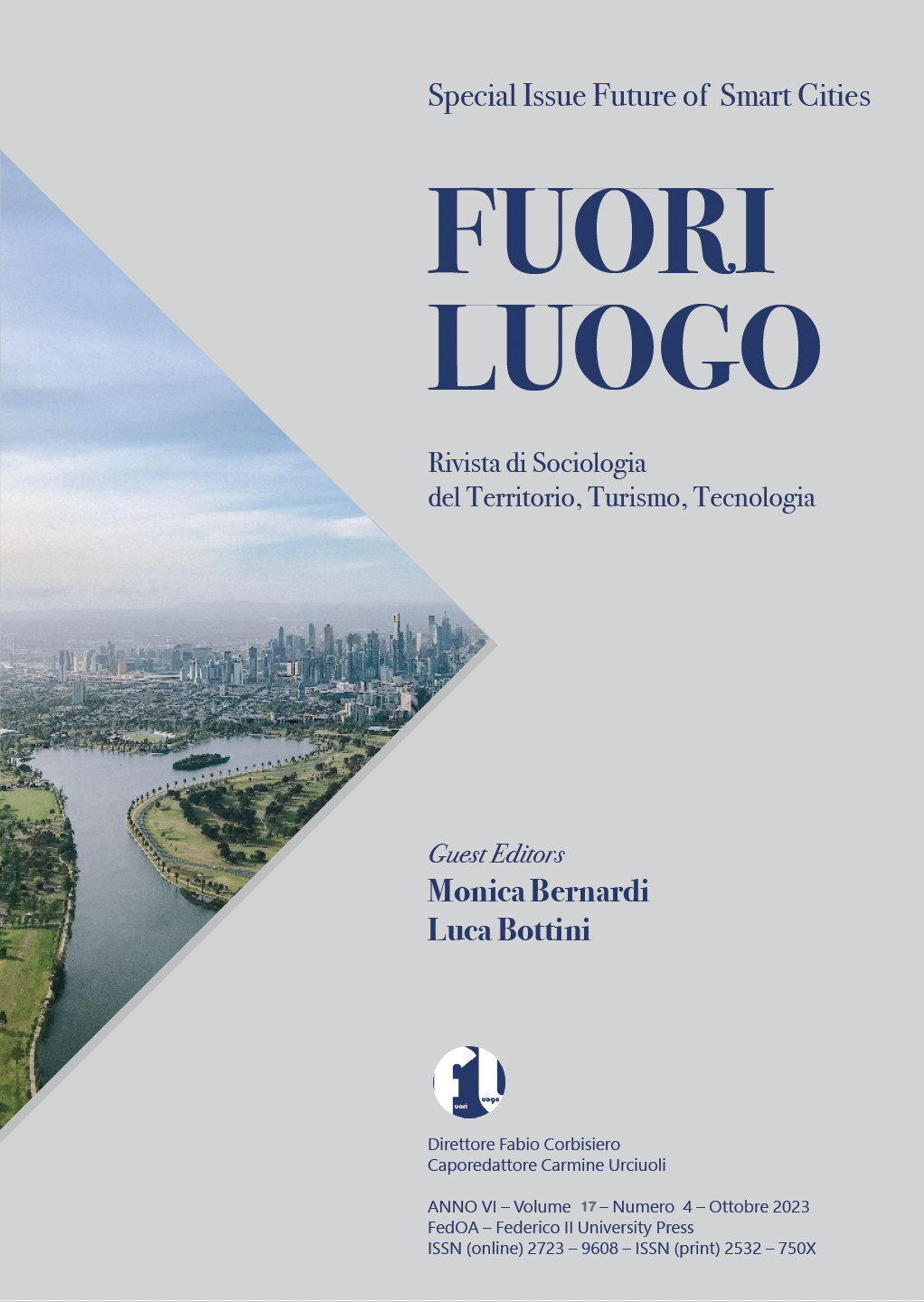Climate Change and Social Inequalities: the Gap Between Climate Solutions & Environmental Justice
Abstract
The Davos World Economic Forum (2023) confirmed that climate risks and social inequalities are two sides of the same crisis.
Inequalities represent one of the greatest obstacles to sustainable urban regeneration in smart cities, for a real equitable future based on a neutral climate scenario. The last Oxfam report (2023) reveals that, for the first time in 25 years, extreme wealth and extreme poverty have increased simultaneously and 2020 is likely the year with the largest increase in poverty since World War II. The fight against inequalities therefore represents one of the main 17 objectives of the 2030 Agenda for Sustainable Development.
At the same time, from various studies on the place and role of the Anthropocene (Pellizzoni, 2021) in today's crisis, it emerges that the human impact on the planet has never had such rapid times and such devastating consequences as in the last twenty years, where the impacts of climate change have reached historic highs. Nevertheless, the climate crisis caused by the richest 1% of the world's population produces devastating effects mainly on the poorest, who bear the least responsibility, while the Oxfam carbon budget (2023) is rapidly depleted just to allow a super-rich minority to consume more and more. Inequalities and climate change, therefore, feed each other.
It is therefore unthinkable to believe that we can solve the climate crisis without acting directly on inequalities, since the benefits obtained on one side could be neutralized if we do not act on the other side at the same time.
Climate change could also represent a multiplier of all kinds of existing inequalities, leading to the construction of new environmental inequalities caused by a form of distributive injustice of extreme weather events. According to such a specific form of injustice, that led some scholars to reflect about an intrinsically racist dimension of climate change (Williams, 2022), the worst effects of this environmental crisis always end up concentrating more violently on poor areas and more vulnerable groups, causing serious direct and indirect damages. Even the numerous "climate solutions" put in place by several governments for the ecological transition can turn into further causes of climate inequality and climate exclusion.
Climate justice today therefore assume a central role in the process of ecological transition.
This study proposes to apply a critical reflection of these theories, demonstrating the inseparable correlation between fragile areas/populations and the impacts of climate crises through the selection and analysis of some case studies referring to Genoa, an historically polycentric city, shaped by multiple centralities and peripheries. This also allowed to experiment on a local/urban scale some dynamics and theories generally projected on a global scale of reference, thus considering the profound differences within the same city, whose different cases have been analyzed on the basis of three dimensions used in order to classify different forms of distributive injustice: the temporal dimension, the social one and, finally, the territorial dimension (Pellizoni and Osti 2008).
This research aims to demonstrate how the fight against social inequalities could represent a concrete opportunity to think about new theoretical paradigms in a neutral climate scenario towards an actual equitable ecological transition, opening up new possibilities for sustainable urban regeneration in smart cities.
Downloads
Copyright (c) 2023 Alessandra Terenzi

This work is licensed under a Creative Commons Attribution 4.0 International License.




